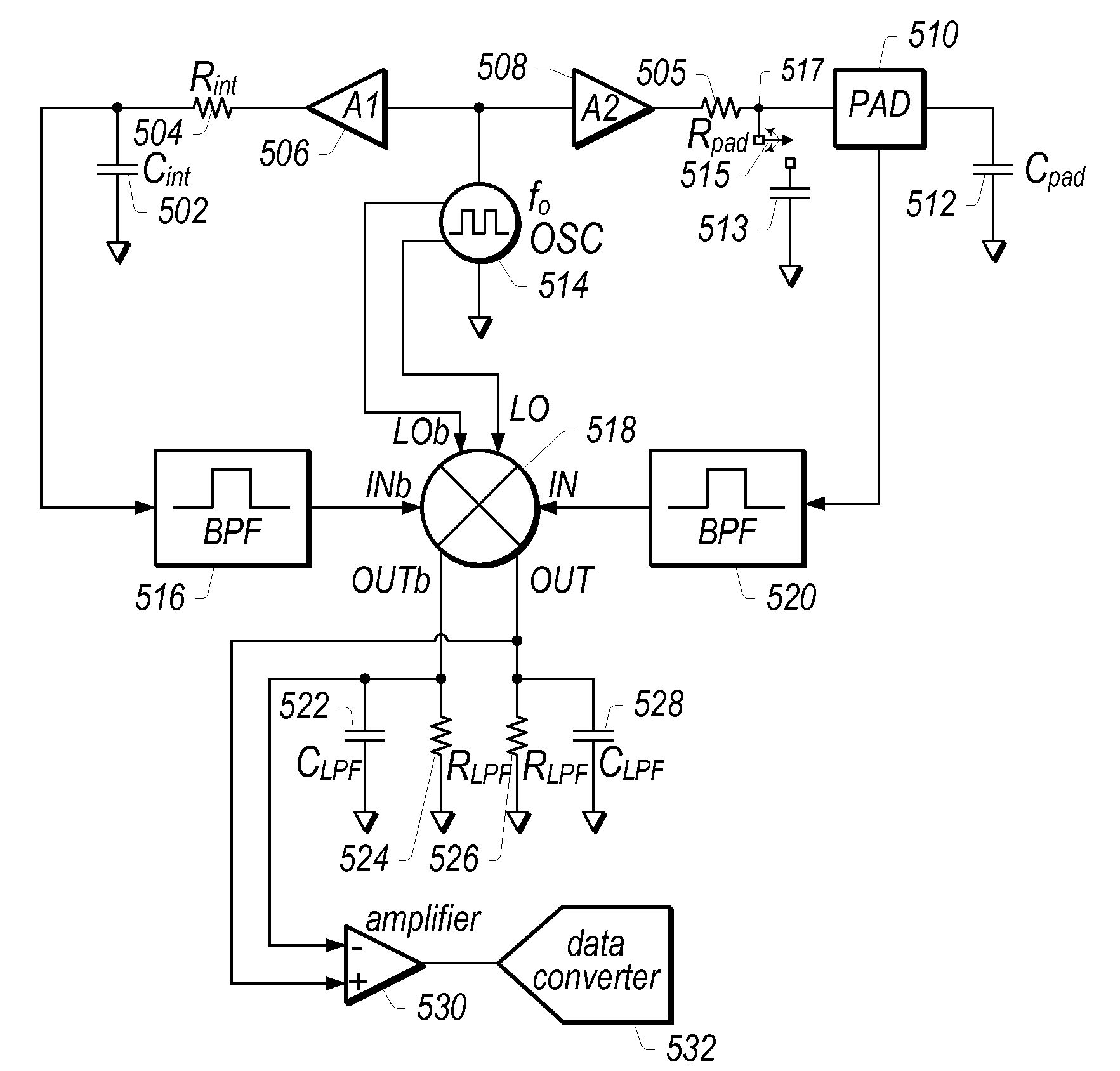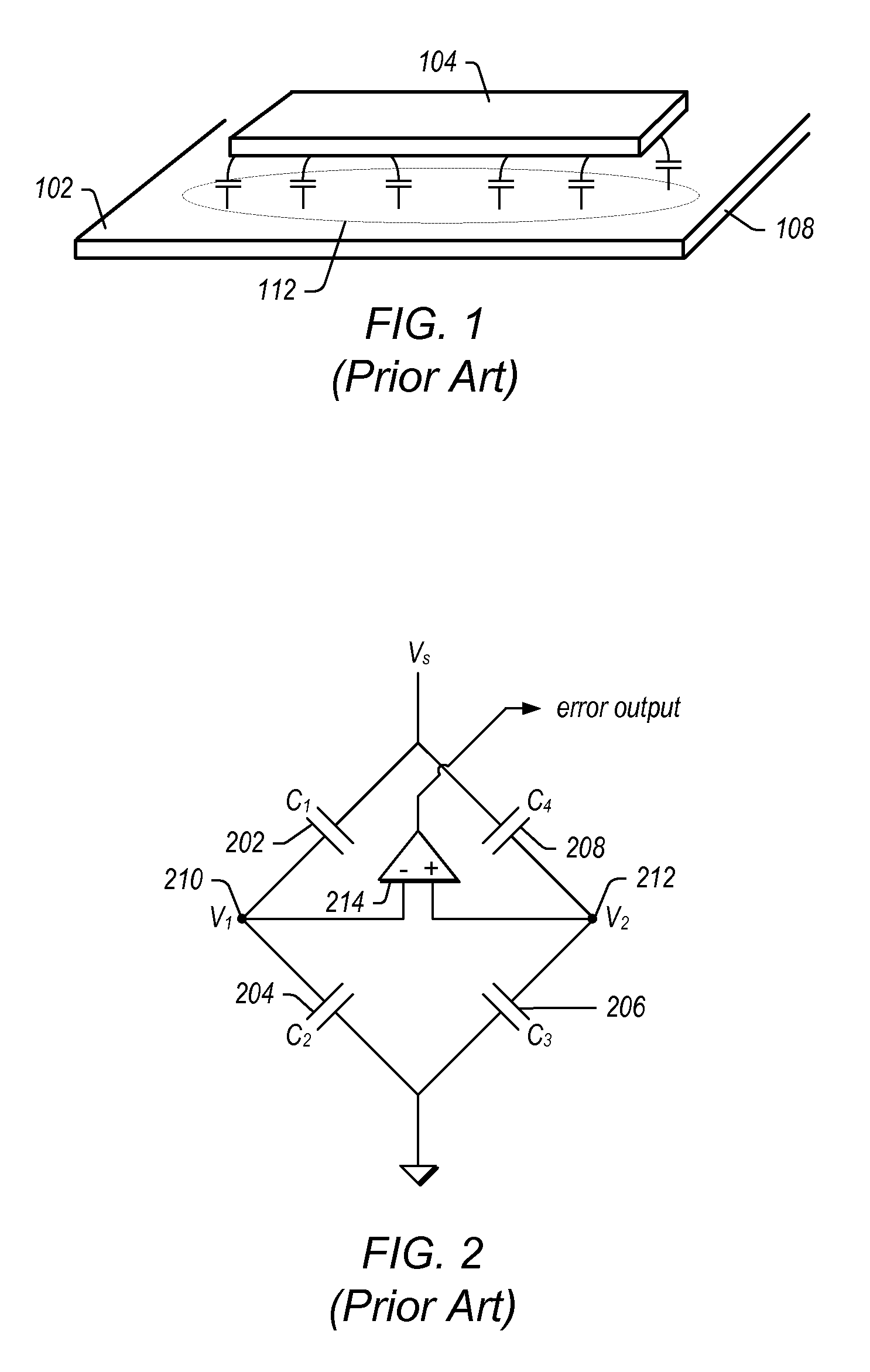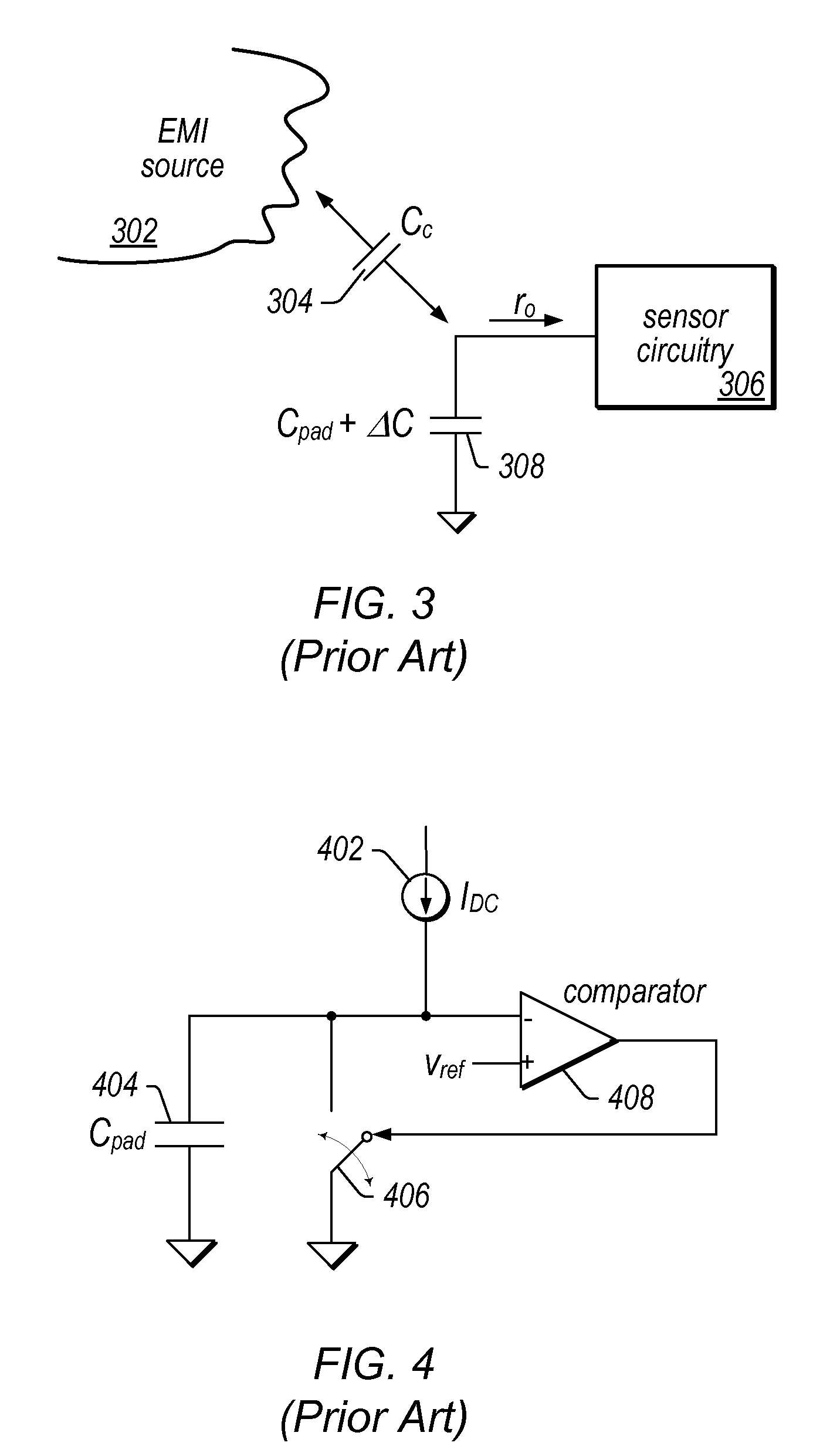Adaptive Capacitive Sensing
a capacitive sensing and capacitive technology, applied in the direction of resistance/reactance/impedence, instruments, pulse techniques, etc., can solve the problems of capacitive sensors mistriggering or not functioning properly, touch pad false triggering, mobile devices configured with touch sensors especially present significant challenges, etc., to minimize in-band signal interference and minimize emi susceptibility
- Summary
- Abstract
- Description
- Claims
- Application Information
AI Technical Summary
Benefits of technology
Problems solved by technology
Method used
Image
Examples
Embodiment Construction
[0031]Various embodiments of the present invention comprise a capacitive sensing system capable of detecting an increase in capacitance on a pad that may occur when an object, such as a fingertip is near the pad or touches the pad. It should be noted that in many embodiments, the actual surface of the pad may be covered with an insulating layer, in which case the insulating layer may be considered a part of the pad, and touching the pad may be interpreted as touching the insulating layer. As shown in FIG. 1, a metal pad 104 may be configured on circuit board 102 comprising a ground layer 108. The capacitance between metal pad 104 and the ground layer 108 is illustrated by capacitance 112.l Placing an object, such as a human finger near or on pad 104 may result in added capacitance between pad 104 and ground, thereby increasing the pad capacitance. Typical parasitic pad capacitance (i.e. capacitance 112) may range from 5 pF to 50 pF, while typical capacitance increase from a human fi...
PUM
 Login to View More
Login to View More Abstract
Description
Claims
Application Information
 Login to View More
Login to View More - R&D
- Intellectual Property
- Life Sciences
- Materials
- Tech Scout
- Unparalleled Data Quality
- Higher Quality Content
- 60% Fewer Hallucinations
Browse by: Latest US Patents, China's latest patents, Technical Efficacy Thesaurus, Application Domain, Technology Topic, Popular Technical Reports.
© 2025 PatSnap. All rights reserved.Legal|Privacy policy|Modern Slavery Act Transparency Statement|Sitemap|About US| Contact US: help@patsnap.com



